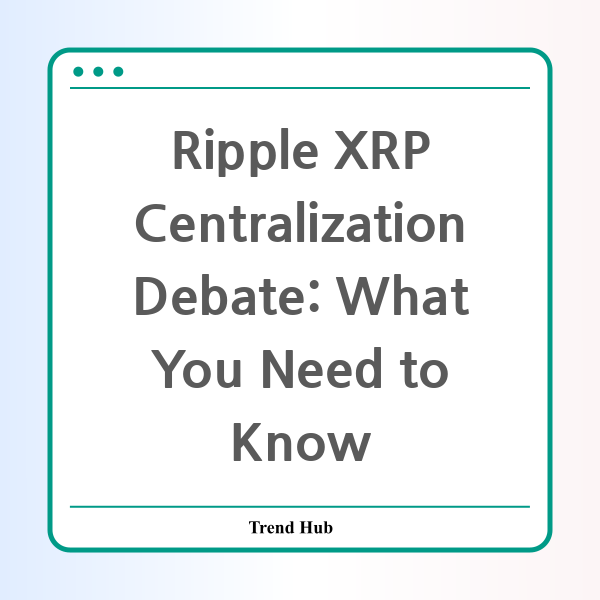* This website participates in the Amazon Affiliate Program and earns from qualifying purchases.

What does the future hold for Ripple's XRP amidst growing controversy over its decentralization? The conversation around Ripple and its cryptocurrency XRP is heating up, especially with the ongoing debate about whether XRP can truly be categorized as decentralized. As the financial landscape evolves, understanding this issue is crucial for investors and enthusiasts alike.
The controversy gained traction when Ripple's Chief Technology Officer, David Schwartz, addressed concerns raised by critics regarding the company's control over XRP and the implications for decentralization. The question at hand is whether Ripple's influence on the XRP Ledger (XRPL) undermines the principles of a decentralized network.
Critics, including prominent figures in the crypto community, argue that Ripple’s control of a significant portion of XRP's total supply—about 50%—creates vulnerabilities that could lead to price manipulation. This position was notably emphasized by Rajat Soni, a finance expert who warned that such centralization makes XRP an unattractive option for banks. Soni pointed to the lack of decentralization as a key factor in why banks might hesitate to adopt XRP in their operations.
In opposition, Schwartz outlined how the XRPL operates through a unique consensus algorithm that does not rely on traditional proof-of-work systems, which are prevalent in Bitcoin mining. He explained that validators on the XRPL are not incentivized to act dishonestly since they are not compensated. This structure, Schwartz argues, ensures that achieving consensus on transactions is a collaborative effort that cannot easily be manipulated by a single party.
Moreover, Schwartz tackled the suggestions that Ripple could alter the XRPL in ways that would favor its own interests. He assured the community that any significant changes to the network would require an agreement among validators, making unilateral alterations highly unlikely. In his view, the decentralized makeup of XRPL is not only theoretical but practical, ensuring its resilience against control by any single entity.
Despite these reassurances, doubts linger, particularly following Ripple's legal challenges with the SEC regarding whether XRP should be classified as a security. This event caused significant turmoil in XRP's market value, and Soni believes that such regulatory issues will continue to pose challenges for XRP’s adoption by major financial institutions. His insights reflect a broader sentiment in the crypto space, where Bitcoin is often lauded for its decentralization—making it a more appealing option for banks seeking stability and security.
As Ripple continues to advocate for the use of XRP in cross-border payments, the divide in opinions only seems to widen. Ripple's CEO, Brad Garlinghouse, has called for a diversified approach to cryptocurrency that would bolster the U.S. financial landscape and promote technological leadership. Yet, Soni and others remain skeptical of XRP's role in achieving these ambitious goals due to its perceived structural flaws.
Ultimately, the discussion surrounding Ripple and XRP highlights a crucial juncture in the digital asset landscape. Financial institutions are beginning to explore the potential of digital currencies, but as the case of XRP illustrates, the road to adoption is fraught with challenges—chief among them, the specter of centralization, regulatory scrutiny, and market volatility. As these debates continue to unfold, they will undoubtedly shape the future of not just XRP, but the broader cryptocurrency ecosystem.
* This website participates in the Amazon Affiliate Program and earns from qualifying purchases.